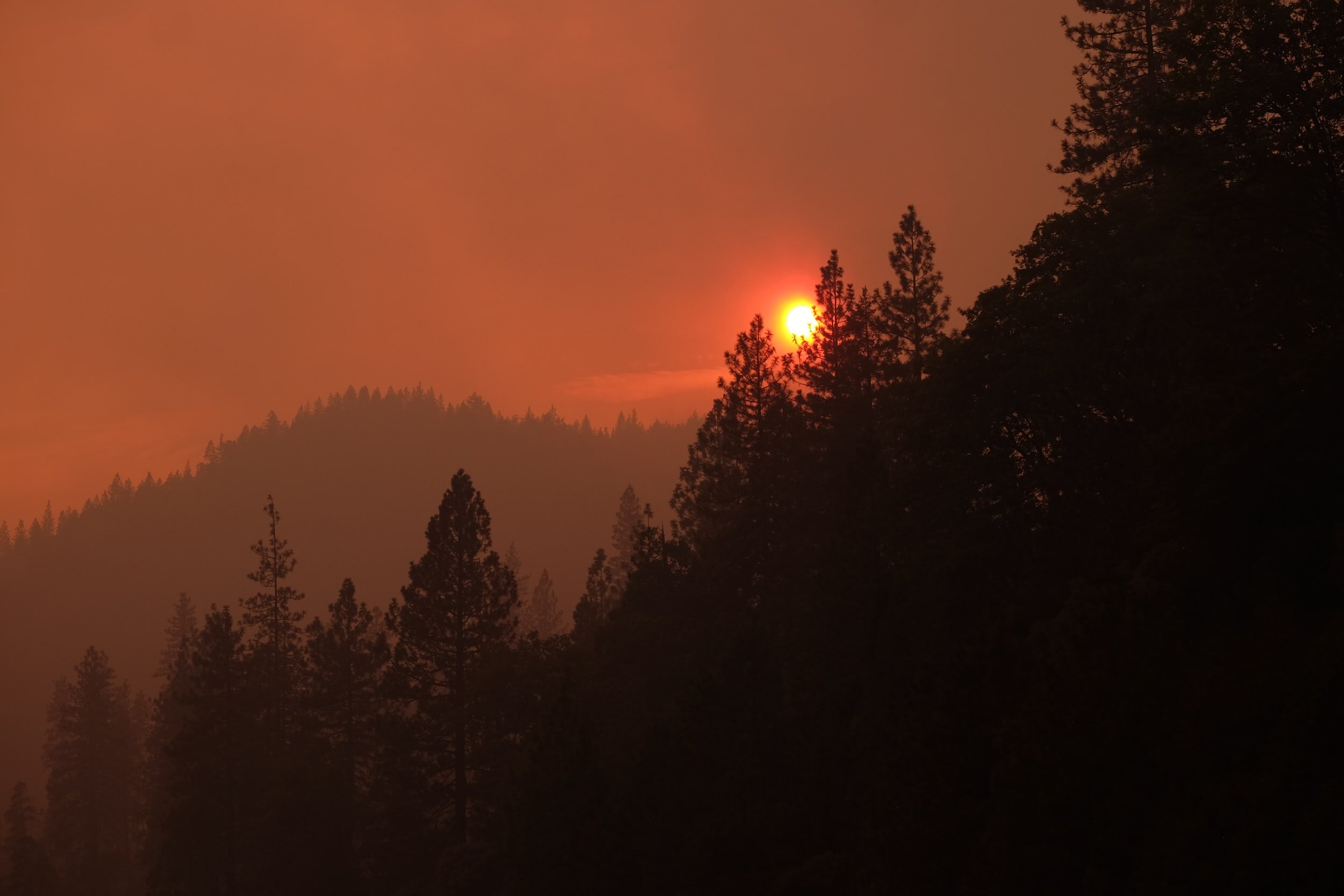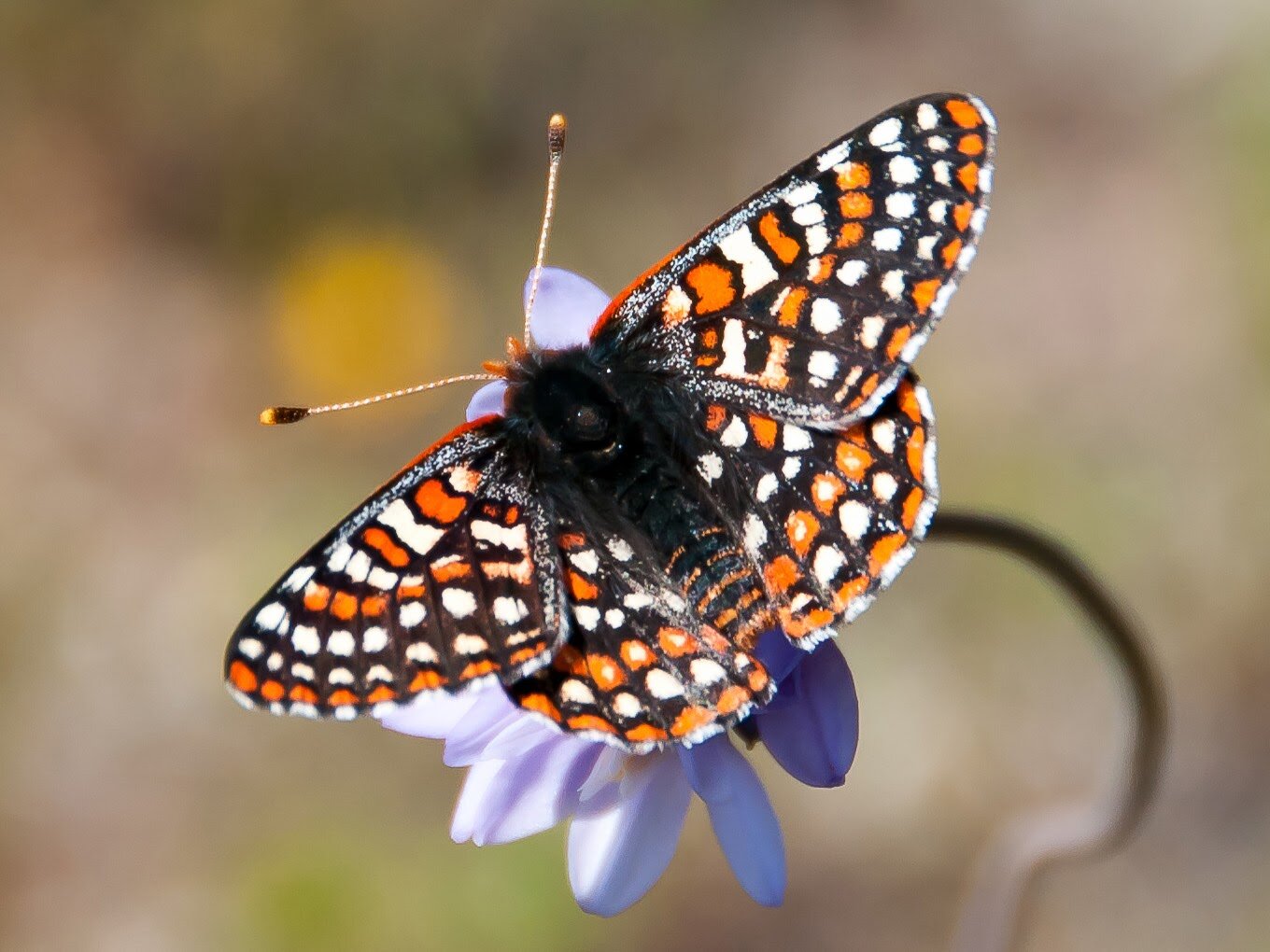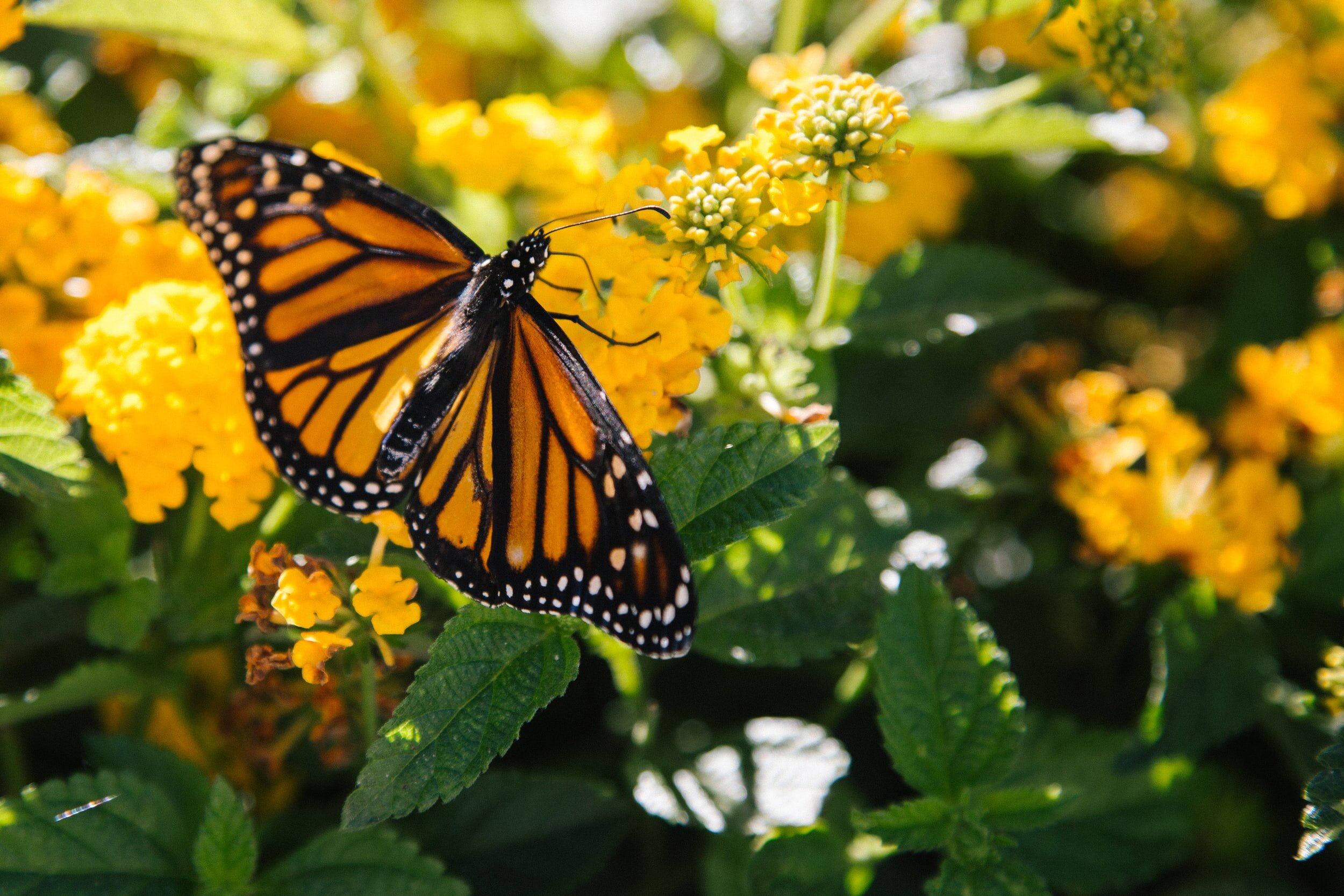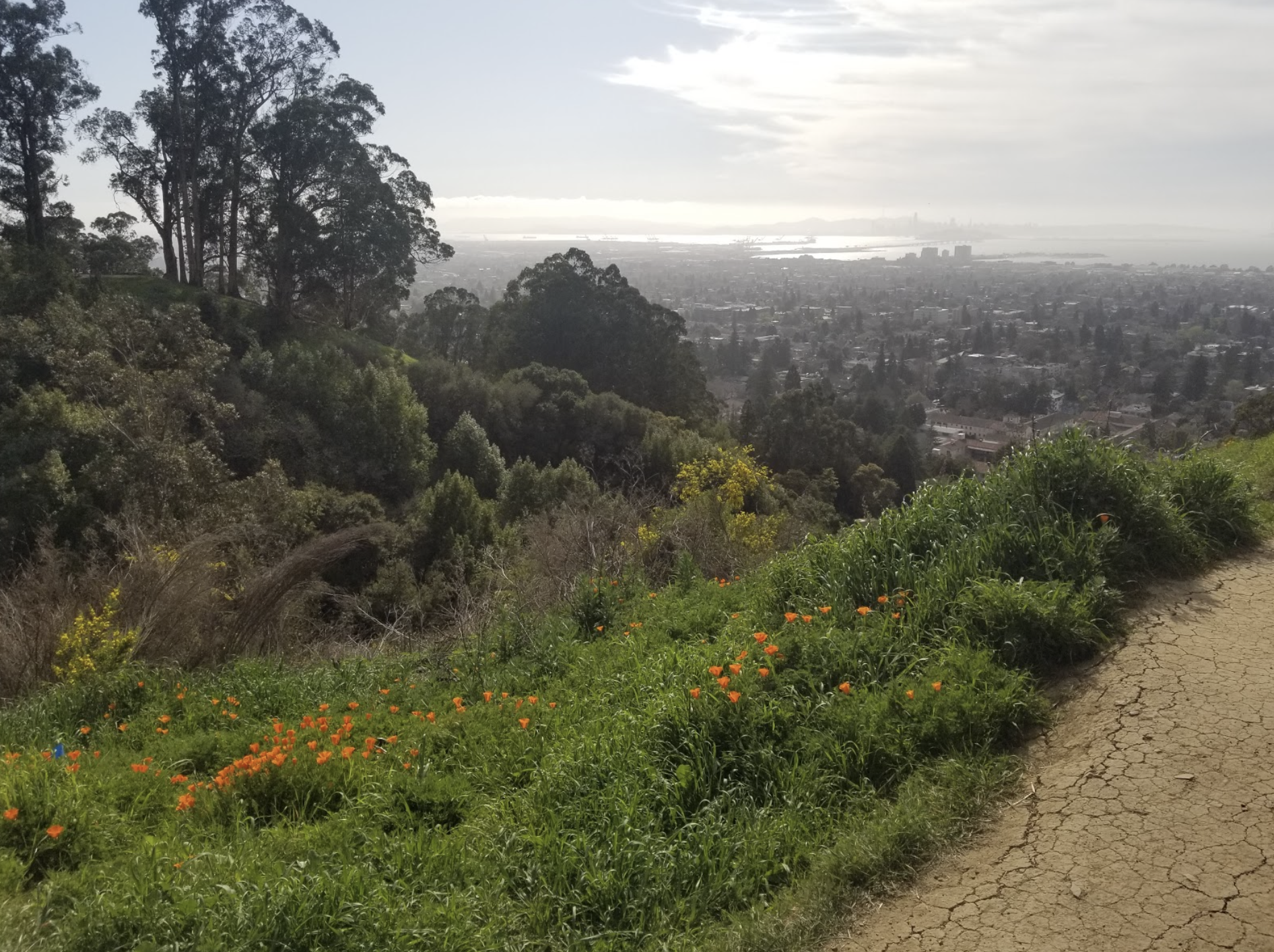Ecology
Featured Posts
The echoes of a thousand terns reverberate through the morning mist. Overhead, a pelican calls out to its flock. Hummingbirds dive nearby, chattering their war-cries. A Great Egret cries in the distance. This is the dawn symphony at the Bolsa Chica Ecological Reserve, a 1,499 acre wetland ecosystem that brims with biodiversity.
Over the past few years, land acknowledgements have become commonplace at UC Berkeley. You may see them in email signatures, lecture slides, and introductions to webinars. All too often, once the slide is clicked through or the next guest speaker takes the stage, the land acknowledgment, or any further information regarding Indigenous land and sovereignty, is not brought up again…
It has been two years since California overcame its over seven year-long drought, only to digress to an even worse state of drought in 2021. While the state frequently receives low rainfall, this is a cause for concern because of rising temperatures stemming from climate change…
Climate change, and the threat of wildfire that accompanies it, is often equated to a great, existential war between the extreme forces of nature and humanity. Much like wartime commendations of the men and women fighting on the frontlines, wildland firefighters are celebrated as the last line of defense on the wilderness frontier…
Nowhere is the impact of the years-long drought and system of dams seen as intensely on the native salmon populations of California. Rising water temperatures in California have wrought enormous damage on salmon populations; some 14,000 of the 16,000 Chinook salmon eggs died around the Sacramento area this year alone.
Within 15 minutes, one can move from a loud, chaotic city to a quiet, scenic lake nestled in the Berkeley Hills. Lake Anza is a natural, spring-fed lake with a sandy beach found in Tilden Regional Park. Surrounded by trees that provide shade and excellent climbing opportunities, Lake Anza has a lot to offer…
On October 1st, residents along the Pacific coast down in southern California sensed the faint smell of petroleum. An oil spill was confirmed the following day, 5 miles off the coast of Newport and Huntington Beach. This environmental devastation equates to an estimated 144,000 gallons.
At roughly 90,000 pounds, the gray whale roams the shallow coastal waters of the North Pacific Ocean. This marine mammal usually migrates alone or in small pods, and their habitats range from the far western Pacific by east Asia, to the Arctic, and reproduce in the far east by Baja California.
The COVID-19 virus has taken our economical, societal, and even natural world by storm. Before COVID, tourists and rangers alike shielded at-risk species from being trophy hunted. Now that many areas lack the tourists to monitor any local poachers as well as fund wildlife management, animals all around the world are vulnerable to commodification to an alarming extent.
All posts
A commonly overlooked consequence of rising sea levels due to the greenhouse gas effect is severe coastal erosion– a growing threat for California as most of our population lives in coastal cities. Studies show that 40% of California’s beaches are experiencing long-term (~120 years) erosion of -0.2m/year, while 66% are experiencing short-term (~25 years) erosion of -0.3m/year.
The echoes of a thousand terns reverberate through the morning mist. Overhead, a pelican calls out to its flock. Hummingbirds dive nearby, chattering their war-cries. A Great Egret cries in the distance. This is the dawn symphony at the Bolsa Chica Ecological Reserve, a 1,499 acre wetland ecosystem that brims with biodiversity.
Over the past few years, land acknowledgements have become commonplace at UC Berkeley. You may see them in email signatures, lecture slides, and introductions to webinars. All too often, once the slide is clicked through or the next guest speaker takes the stage, the land acknowledgment, or any further information regarding Indigenous land and sovereignty, is not brought up again…
It has been two years since California overcame its over seven year-long drought, only to digress to an even worse state of drought in 2021. While the state frequently receives low rainfall, this is a cause for concern because of rising temperatures stemming from climate change…
Climate change, and the threat of wildfire that accompanies it, is often equated to a great, existential war between the extreme forces of nature and humanity. Much like wartime commendations of the men and women fighting on the frontlines, wildland firefighters are celebrated as the last line of defense on the wilderness frontier…
Nowhere is the impact of the years-long drought and system of dams seen as intensely on the native salmon populations of California. Rising water temperatures in California have wrought enormous damage on salmon populations; some 14,000 of the 16,000 Chinook salmon eggs died around the Sacramento area this year alone.
Within 15 minutes, one can move from a loud, chaotic city to a quiet, scenic lake nestled in the Berkeley Hills. Lake Anza is a natural, spring-fed lake with a sandy beach found in Tilden Regional Park. Surrounded by trees that provide shade and excellent climbing opportunities, Lake Anza has a lot to offer…
On October 1st, residents along the Pacific coast down in southern California sensed the faint smell of petroleum. An oil spill was confirmed the following day, 5 miles off the coast of Newport and Huntington Beach. This environmental devastation equates to an estimated 144,000 gallons.
At roughly 90,000 pounds, the gray whale roams the shallow coastal waters of the North Pacific Ocean. This marine mammal usually migrates alone or in small pods, and their habitats range from the far western Pacific by east Asia, to the Arctic, and reproduce in the far east by Baja California.
The COVID-19 virus has taken our economical, societal, and even natural world by storm. Before COVID, tourists and rangers alike shielded at-risk species from being trophy hunted. Now that many areas lack the tourists to monitor any local poachers as well as fund wildlife management, animals all around the world are vulnerable to commodification to an alarming extent.
Ranging from one to two pounds and roughly a foot long, the Riparian Brush Rabbit is high on the list of endangered species in the state of California. They can be found on the west coast, from Oregon and all the way down to Mexico, scuttling away into burrows and climbing trees in temperate and arid climate zones.
East Bay oyster banks are steeped in history rooted in the precolonial lives of Indigenous communities, and they are witnesses to the rise of what is now the modern day East Bay. Recent development projects and infrastructure have fundamentally altered the ecology of the oyster banks and have destroyed several traditional Ohlone shell mounds, formations composed of shell and soil formed by Indigenous groups once living along the coastal East Bay.
Hiking through the Berkeley Fire Trails always seems like a relaxing experience after a busy day of online classes, meeting, and projects. Coast live oak, deer, and other chaparral wildlife are certainly comforting sights. But during dusk and dawn, it is not uncommon for a crepuscular predator to roam through the hills.
The year is 2070. The location, Berkeley, California. It’s a warm summer evening, and a humid breeze blows through the grass. The sun is setting over the hills, and the sky is ablaze with orange, red, and purple streaks. You’re content, the temperature soothing and the fabric of your shirt and shorts soft.
In recent years, and especially during quarantine, electronic device usage has seemingly overtaken the world. LEDs, or light-emitting diodes, are responsible for illuminating many electronics that are currently in use such as computer and phone screens. Artificial lighting has seriously impacted many types of wildlife, from trees to frogs to migratory birds and beyond, and many organisms are suffering as a result.
For five years, two peregrine falcons named Annie and Grinnel have been living peacefully in the Campanile on Cal’s campus. Peregrine falcons usually mate for life, and this couple has had five successful breeding seasons on campus, resulting in thirteen chicks being born. On April 19th, triplets hatched and can be seen on the livestream.
Go Bears! The chant for Cal’s mascot, the California Golden Bear, embodies passion, excitement, and even sarcasm. Inspired by the California grizzly bear (Ursus arctos v.californicus), the figure was the symbol of the Bear Flag Revolt, when American settler-colonists rebelled against the Mexican and Spanish rule to declare California an independent republic in the summer of 1846.
One of the largest facets of the environmental protection movement is biological conservation through protecting vulnerable species. There are many organizations and leaders dedicated to protecting wildlife and their ecosystems. The Gulf of California is a dynamic region where biological conservation, social justice, and other initiatives often collide.
Although the Bay Area has the widely beloved BART system to provide public transportation at low emission rates, many people still depend on commuting with their own vehicle. Getting caught in a gridlock is nothing out of the ordinary for a local resident…
When one hears the word “pollinator,” an image of a bee usually pops into their head. Pollinators provide a niche service to ecosystems across the globe, helping plants reproduce the next generation and increasing genetic diversity…
If you are from California, there is a good chance that you are familiar with droughts. From switching to a drought-tolerant lawn and the rise of astro-turf, to shorter showers and no at-home-car-washes, the scarcity of water in this state is an everyday reality for millions of Californians.
The common public perception of bats is historically negative. They are thought of as vectors of disease, aggressive towards humans, and often connotated with myths of vampires. However, bats are an integral and often overlooked component of the food system.
The COVID19 pandemic has created a renewed interest in getting outdoors for many people, especially in the East Bay Regional Park District, which maintains park and trails stretching across the Alameda and Contra Costa counties. I was fortunate to talk to Joseph Mouzon, who is the COO of Outdoor Afro, a nationally recognized non-profit organization whose mission is to inspire and reconnect black people with nature, and Brian Holt, the Chief of the Planning, Trails and GIS Department at the East Bay Regional Park District.
If you ask Berkeley students where they like to hike, chances are that someone will mention the Berkeley Fire Trails or Tilden Regional Park. These areas are prominent fixtures in Berkeley student life as hotspots for hikers, runners, nature-lovers, and overworked students alike, but there is much more to them than meets the eye. There is history behind Berkeley’s natural spaces - and all of California - that is valuable and important to be conscious of when considering their resilience in the face of forces such as global warming and the climate crisis which already impact our daily lives.
You walk through the Sierras, and the crisp air on top of the sweet sugar pine scent helps tone down the worries you carry from your day-to-day life. That moment of peaceful bliss comes to a close when you stumble upon acres and acres of burnt trees. Of course, wildfire is a natural stage of succession, the process forests go through to enable regeneration and the recycling of nutrients. Although, you encounter more tree carcasses and notice the same little insect using them as hosts: bark beetles.
Professor Rosemary Gillespie is a world-renowned evolutionary biologist, and her work focuses largely on island ecology and the evolution of island biodiversity. Professor Gillespie has done extensive research on the Hawaiian Islands focusing on the adaptive radiation and diversification of Hawaiian spiders
Record rainfall flooded homes, stores, and the UC Berkeley campus during the Big Blow of 1962. Chicken Creek, a tributary of Strawberry Creek by the fire trails, flooded the Strawberry Canyon Recreation Area and caused considerable damage to the Hass Clubhouse and all the way down to the International House. The floods and landslides created a wall of mud and debris that broke through a ground floor window at IHouse, flooded the lobby, and broke through the main doors. Down on campus, Strawberry Creek flooded its way through ASUC offices and underground basements.
This election season was nothing short of suspenseful. Citizens from across the nation came out in record numbers to elect the leaders of our country. Equally important, voters decided on a variety of propositions in their state, with wildlife enthusiasts from around the country anticipating Colorado's decision on Proposition 114.
Whether you used soap when you washed your hands, ate bread or ice cream, fed your dog, or did your laundry, it is safe to say that a good portion of the things you used or ate today contained palm oil.































A commonly overlooked consequence of rising sea levels due to the greenhouse gas effect is severe coastal erosion– a growing threat for California as most of our population lives in coastal cities. Studies show that 40% of California’s beaches are experiencing long-term (~120 years) erosion of -0.2m/year, while 66% are experiencing short-term (~25 years) erosion of -0.3m/year.